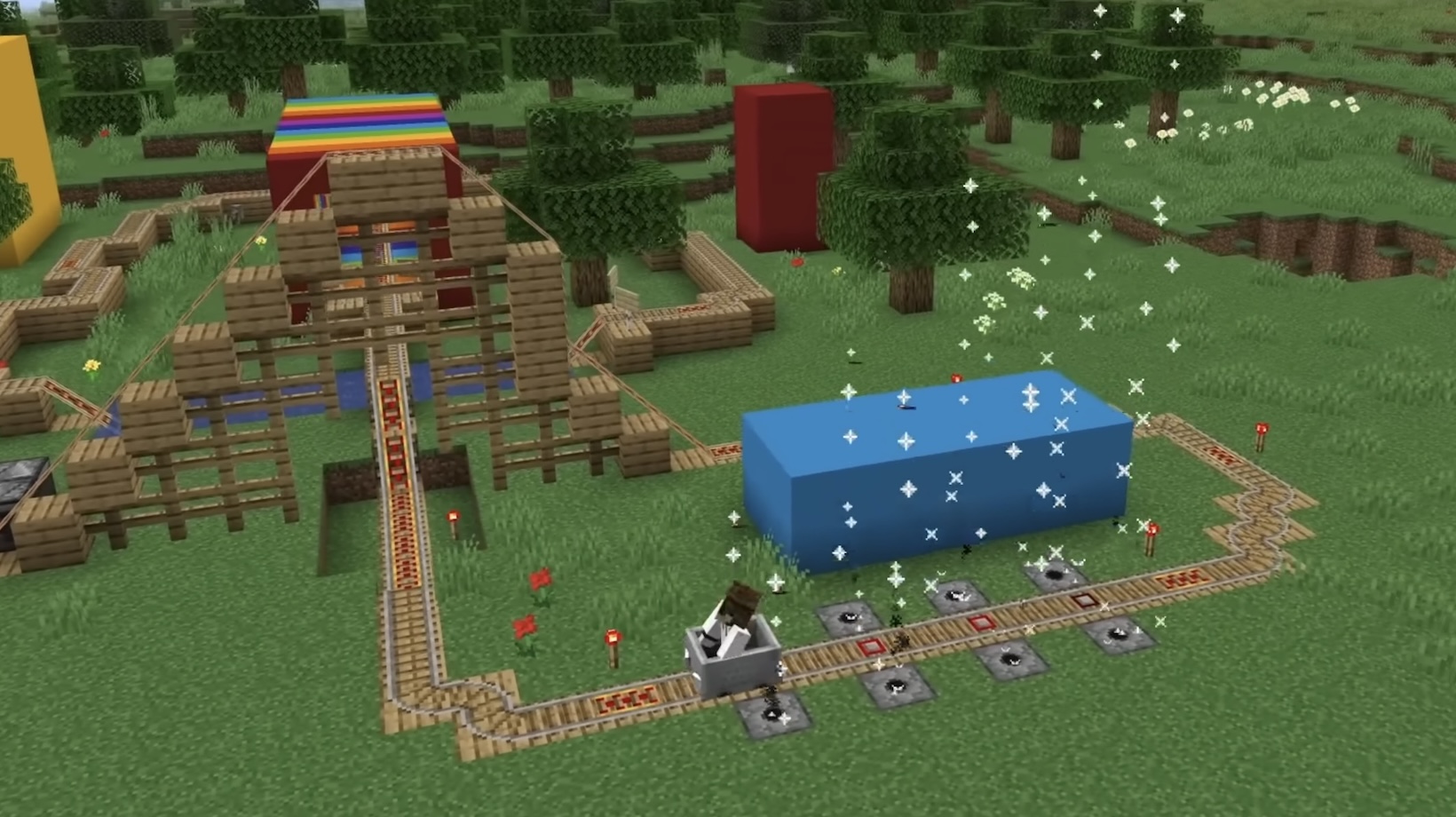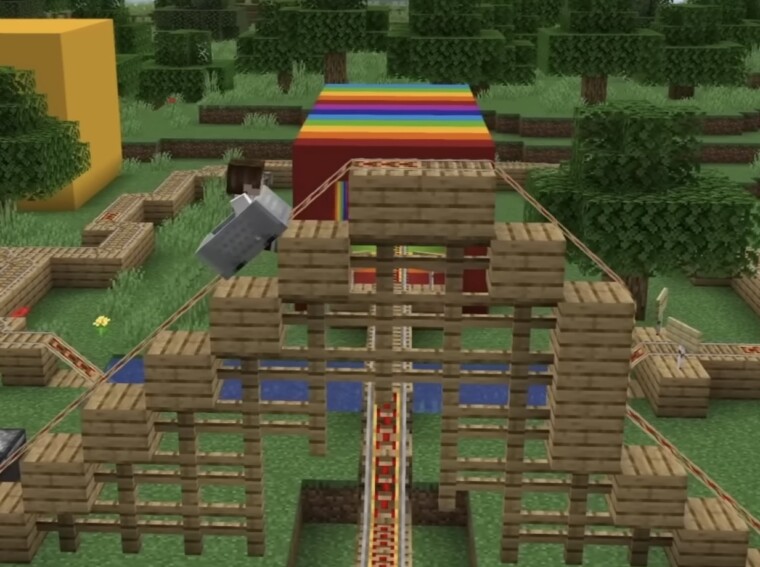How to Make a Roller Coaster in Minecraft
To successfully build a roller coaster in Minecraft, two essential steps are crucial – Choosing the right location and Gathering materials. Let’s discuss these steps comprehensively to make your virtual amusement park a reality.
Choosing the Right Location
Think of real-life amusement parks – location matters! In Minecraft, it’s no different. We’ll need to strategically select a location that allows for enough space and creates the desired experience. Here’s how you can do it:
- Eye the landscape: Look for a naturally pleasing environment that’ll add a special thrill to your ride. Mountains, forests, rivers – all could make fantastic backdrops.
- Make room: Ensure there’s enough space to fully develop your roller coaster without building barriers. Measure roughly how long and wide you plan your ride to be. Take terrain into account — hills, valleys, and water bodies can significantly alter your original design.
- Convenience is key: Pick a location that’s easily accessible. It’ll make construction easier and make it a hot spot once your amusement park is open for business.
Gathering Materials
Building a roller coaster is no small feat — it requires a ton of materials! Let’s round up the ones you’ll need:
- Rails: This is the base of the roller coaster. Regular Rails, Powered Rails, and Detector Rails are all commonly used.
- Minecart: The vehicle of our roller coaster. It’s what the players will ride in.
- Blocks: To build the elevated sections of your ride. Go creative with different types such as wooden planks or stone blocks, depending upon the landscape.
- Redstone torch: To power your rails and make the minecart move.
Feel free to get creative with your materials according to the location and your own unique design!

Building the Roller Coaster Track
Once we’ve finalized our location and gathered our materials, it’s time to move onto the exciting part. So let’s roll up our sleeves and get down to the actual construction of our roller coaster.
Planning the Layout
Start by marking out the path of your roller coaster using blocks. Use different colored blocks for different parts of the track. For example,
- Red blocks can represent dips and downward slopes
- Yellow blocks can mark corner turns
- Green blocks for upward slopes.
Placing the Foundation
Every sturdy roller coaster needs a solid foundation. Build your foundation using a substantial material like stone or brick. Remember to follow your outlined path and to build it high enough to support the entire coaster.
Building the track supports
Next up on the list is the creation of supports for the track. Vertical posts will do the trick. You can stratagize the placement as needed, but typically they should be every 5-6 blocks along the track. Go creative and design the supports as elaborately as you want or maintain a clean esthetic with simplicity.
Placing the Rails
Now comes the most satisfying part – laying down the actual track. Rails go on top of your foundation and support. Ordinary rails are good for most of the track, but you’ll want to peppered powered rails along the way. Powered rails are crucial to keep our minecart moving at a steady pace, especially on slopes.
After carefully placing the rails, our roller coaster begins to take shape. Yet there’s so much more to enhance the thrills and chills.
Testing the Roller Coaster
Now that you’ve built the roller coaster in Minecraft, it’s time to take it for a spin. Run a few test rides by setting a minecart on the track and riding through the entire course. Pay attention to the speed, sharpness of turns, and safety levels. These tests help identify the smoother transitions and where we might need some tweaks. Remember, the actual experience of riding the roller coaster can be very different from our initial plan. So, it’s vital that we put our creation to the test before we move on to the next steps.
Adjusting Speed and Intensity
On your test rides, you may have noticed sections where the ride feels too slow, too fast, or lacks thrill. You can adjust the speed and intensity of these sections. For example, if the roller coaster is moving too slowly, add more powered rails. If the speed is extremely fast it spoils the thrill, reduces the number of powered rails, or alters the nature of the inclines and declines. It’s a process of experimentation until you’re happy with every bit of the ride.
Any changes we make should be retested to ensure they enhance the roller coaster’s overall performance. This iterative process of testing, adjusting, and improvement will make our Minecraft roller coaster a thrilling and memorable experience for every rider.


